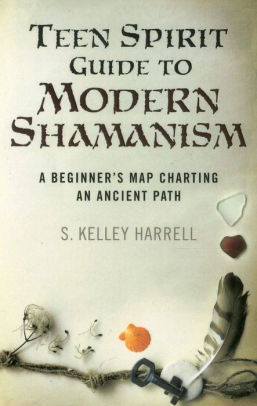Harrell’s targeted audience are young adults or those starting out on the path of shamanism. The language and style of writing is appropriate for the age group without being condescending. Her style informs without droning on. She gives enough information to give the reader a basic knowledge without overwhelming them if this is their first foray into the topic. According to her bio, Kelly Harrell is a modern shaman and lifelong intuitive. She has a master’s in religious studies and is an ordained interfaith minister. With a nature based system, she works with runes and follows Seior, animism, and Druidry. She states her purpose in writing this book is to guide the young intuitive into a mature facilitator of healing for others.
In her preface, Harrell discusses how a young person has wisdom even though they are young. She starts with how most people become aware there is more to their existence beyond themselves and follows through with how young people can have wisdom or can tap into the world knowledge. She discusses the conflict adults have with idolizing childhood and the connection children have with the source of energy but still consider the children / young people to not being wise. By the end of the preface, Harrell attempts to make a connection and mirrors her format in the later essays by talking about her own experiences.
Rather than dividing this book into chapters, Harrell divided it into parts consisting of multiple essays covering related topics. Since the essays are not more than a few pages long, the reader can move quickly, especially since Harrell draws the reader in with her personal stories and easy to read style. At the end of each essay there is a “what do you think” section offering up questions and things to ponder. It's a reflection of what has been discussed and allows the reader to turn the concepts inward in order to better understand and integrate the concepts into their being.
Part 1 begins with a brief history of shamanism. Harrell discusses both the pros and cons of the historical aspects and founders of current shamanism. She moves from history to religion to defining Shamanism and provides a good foundation.
In part 2, Harrell takes you through the beginning steps of becoming a shaman. She covers relationships, tools, totems, spirit guides, shamanic cosmology, and other topics which help the beginner to take the first steps into exploring shamanism.
Part 3 discusses the different types of journeying you can do as a shaman to learn how to shape-shift engage nature spirits and Gage Spirit guides understanding the landscape. She also talks about service, community, the ethics of being a shaman, and the legalities. Additionally she addresses the issue of whether this makes the person a pagan. Finally she covers the topic of the reader who is supposed to be a teen discussing this with the parents.
Harrell ends the book with a list of organizations and resources for the reader to find more information on this topic. This gives the reader an opportunity to explore other perspectives on the topic.
Teen Spirit Shamanism provides an excellent beginning book for a young person wanting to learn about shamanism. She takes the reader through step-by-step with personal stories and essays while at the same time providing food for thought for the reader in order for them to explore being a shaman.
~review by Eileen Troemel
Author: S Kelley Harrell
Soul Rocks Books, 2014
p. 148

